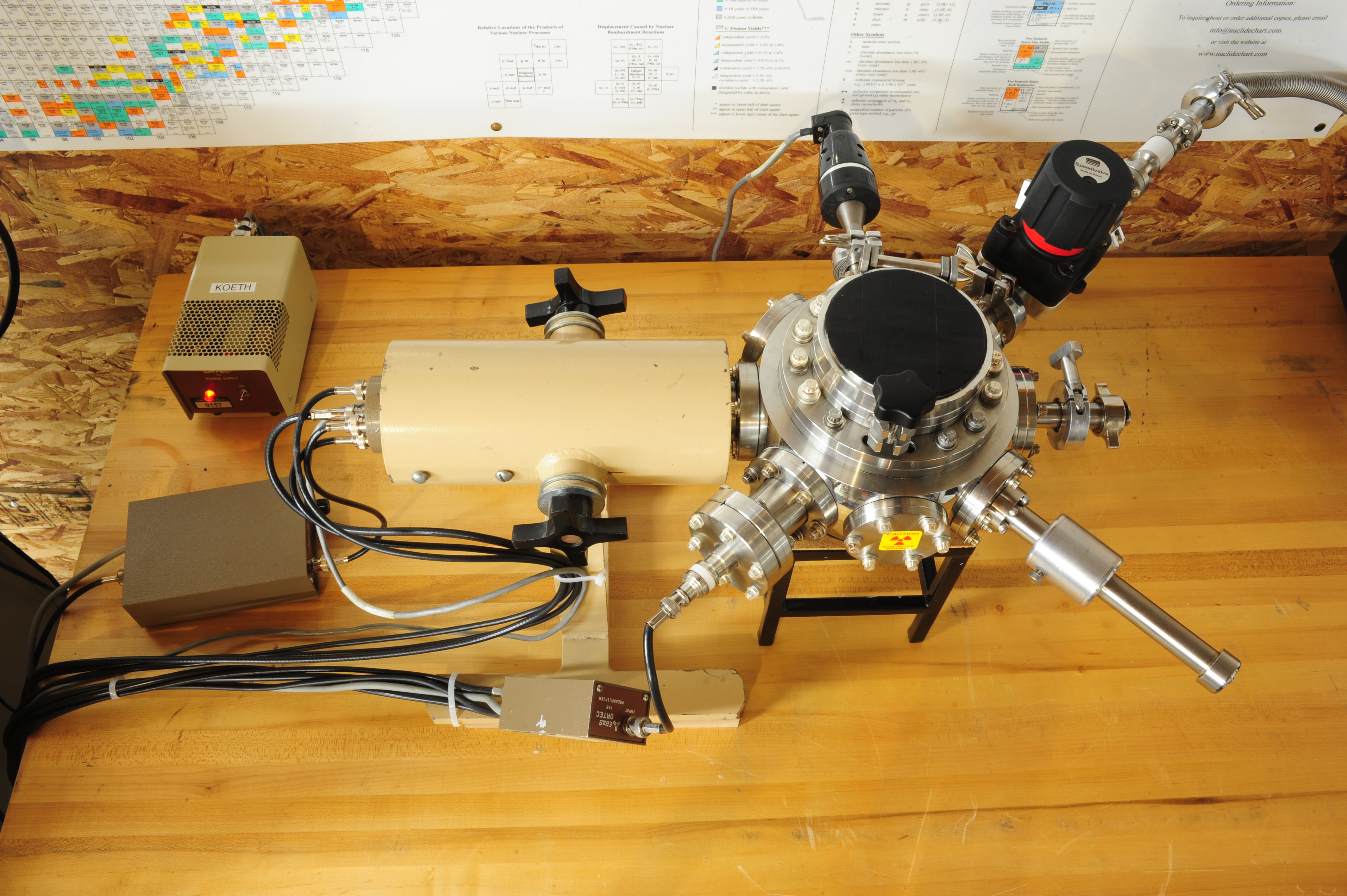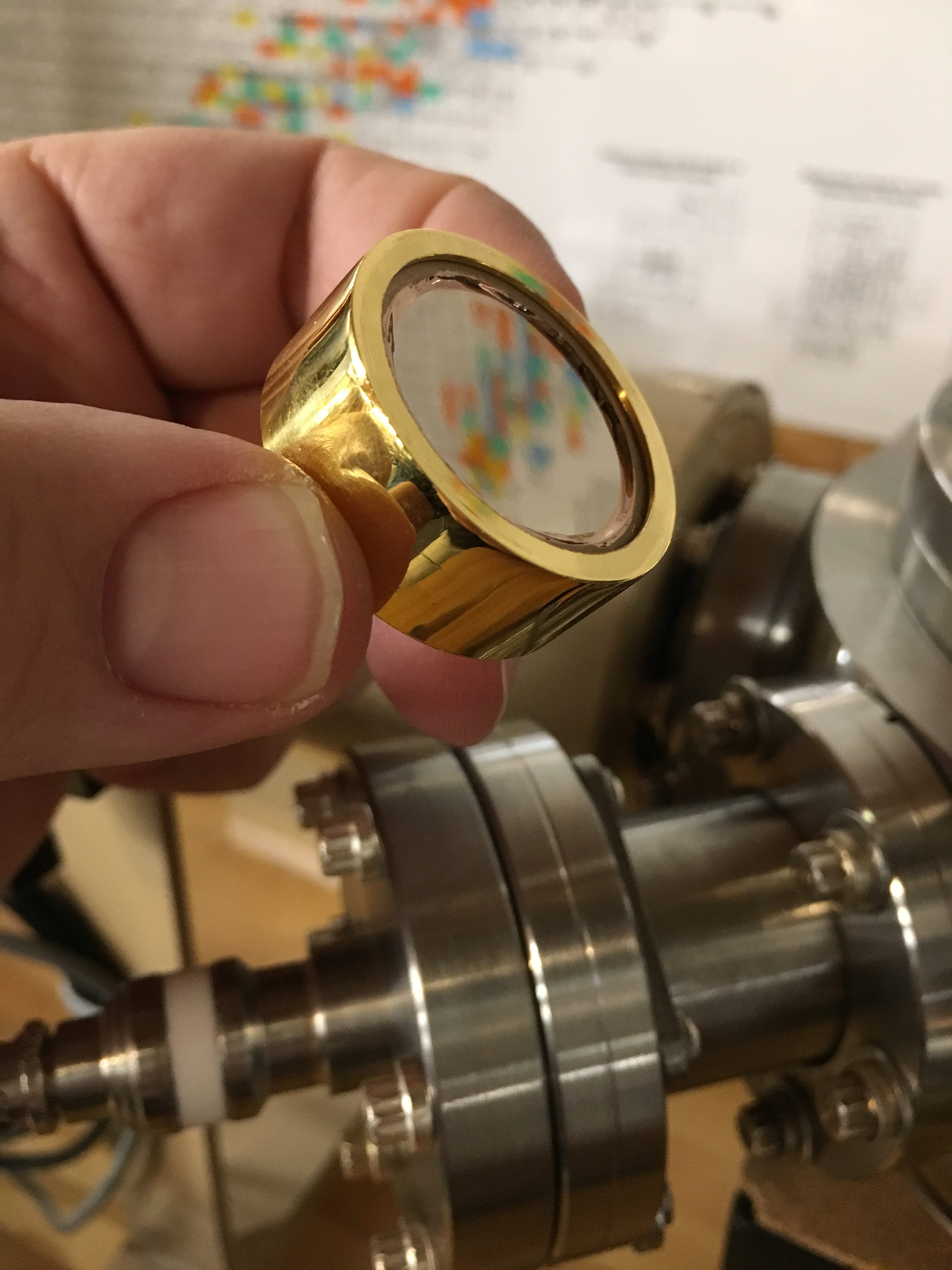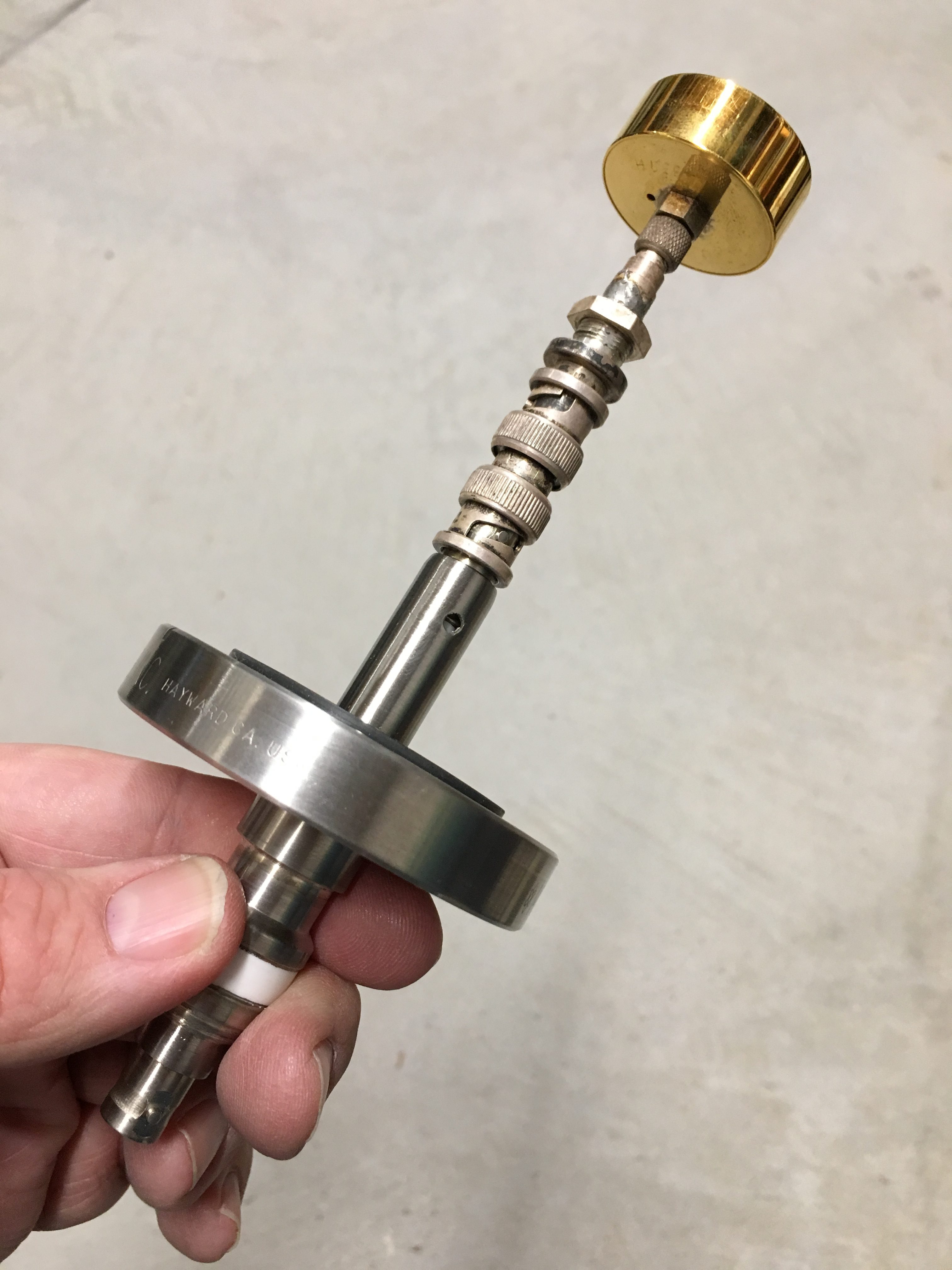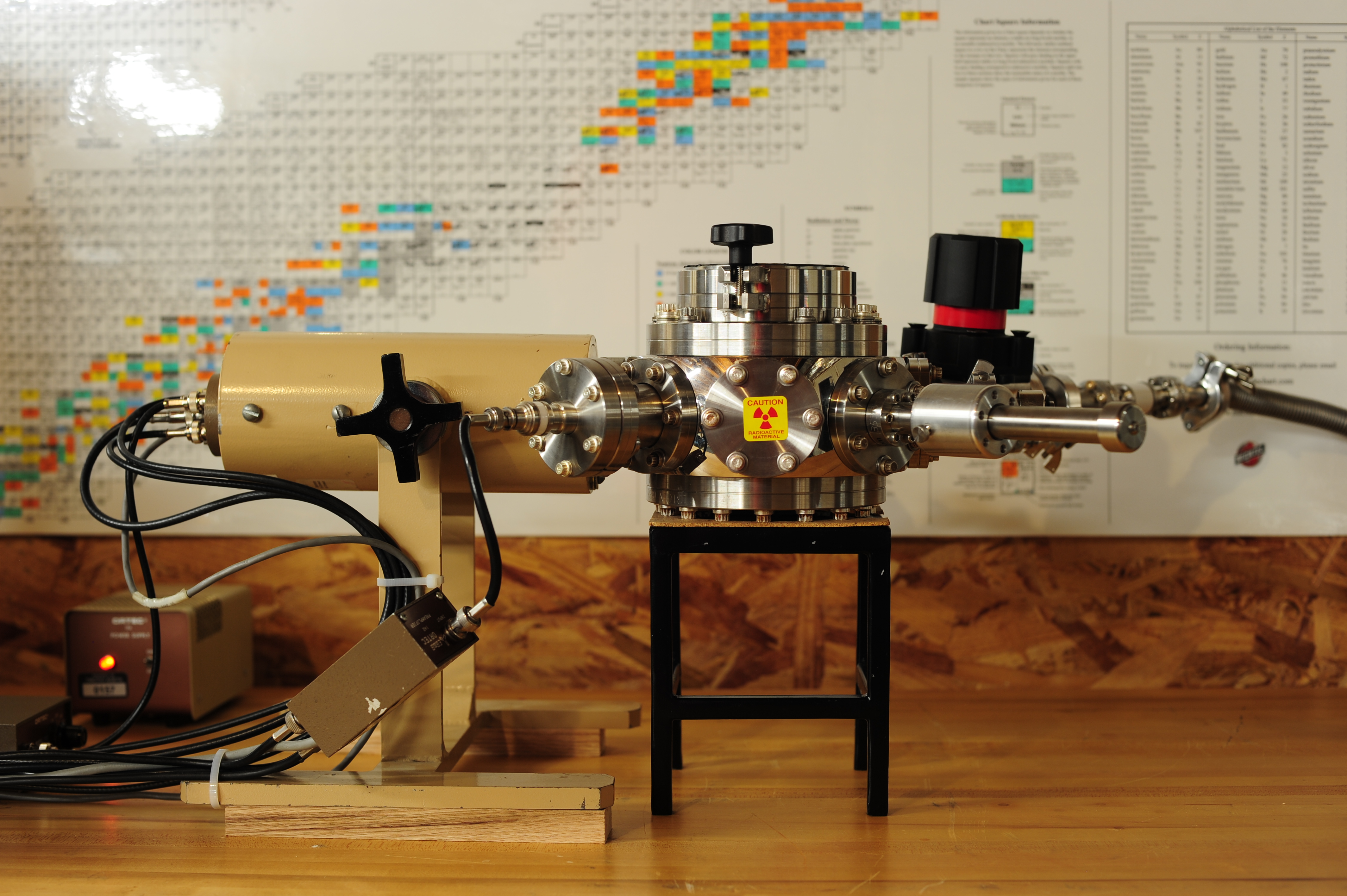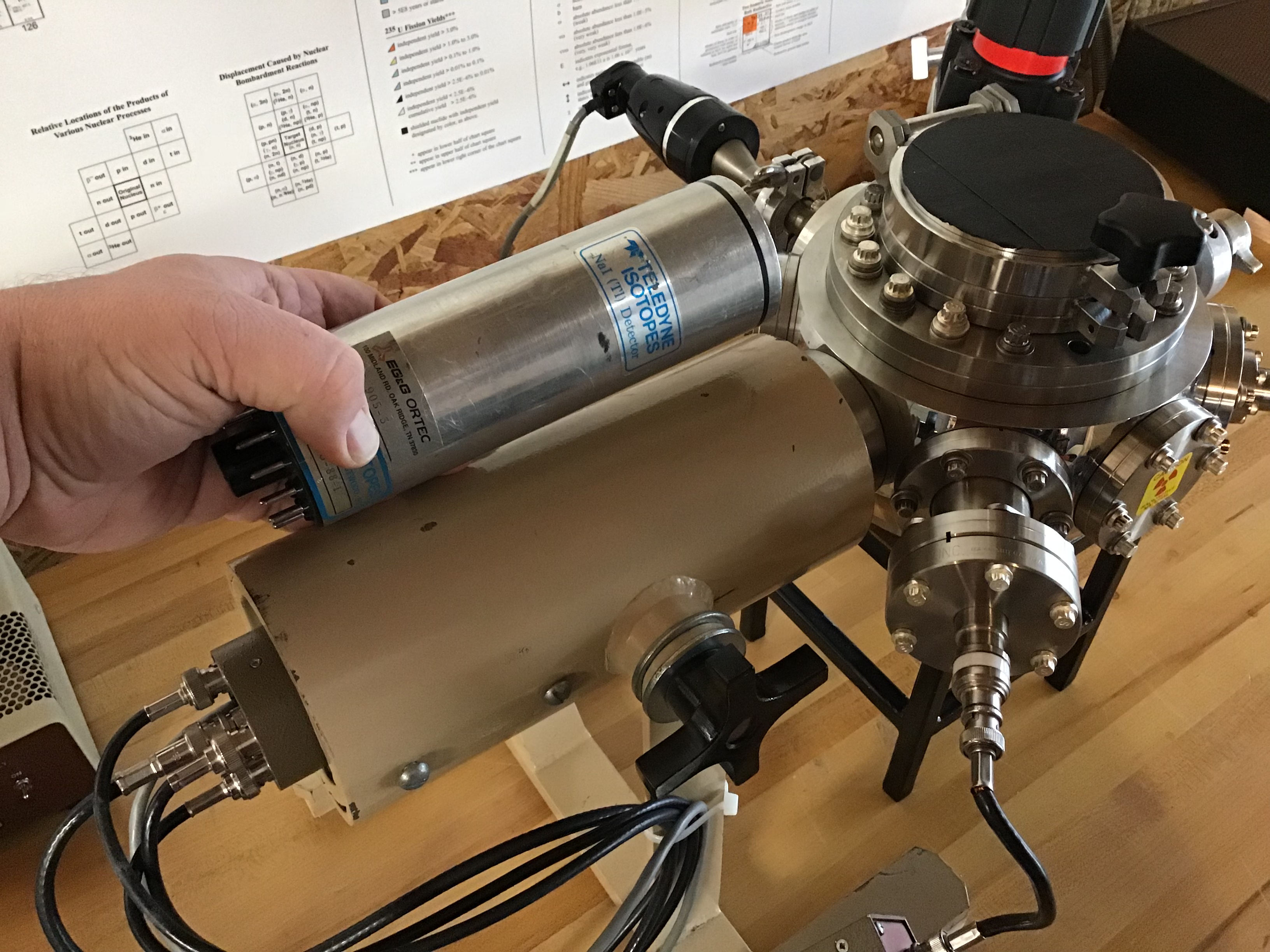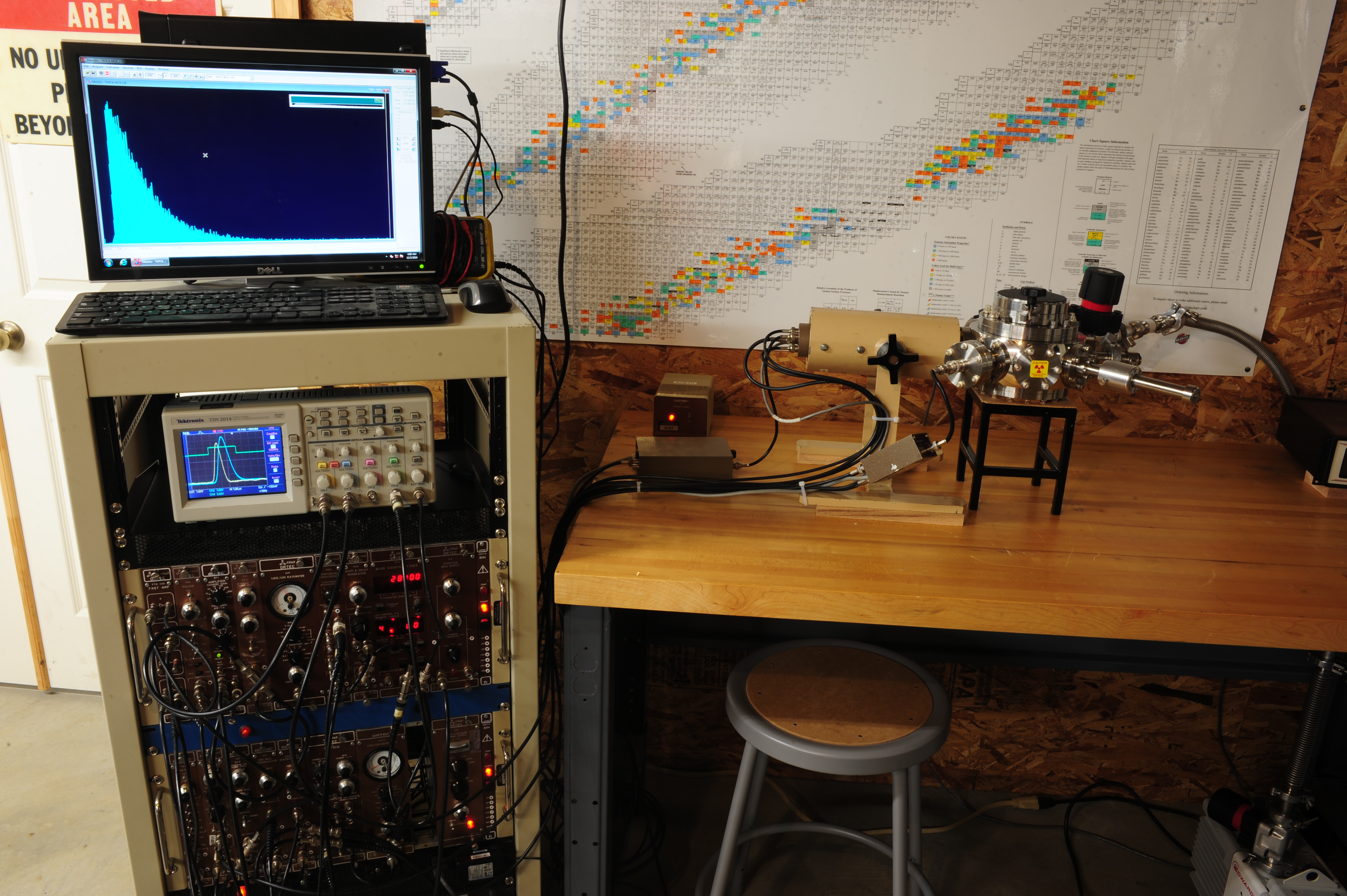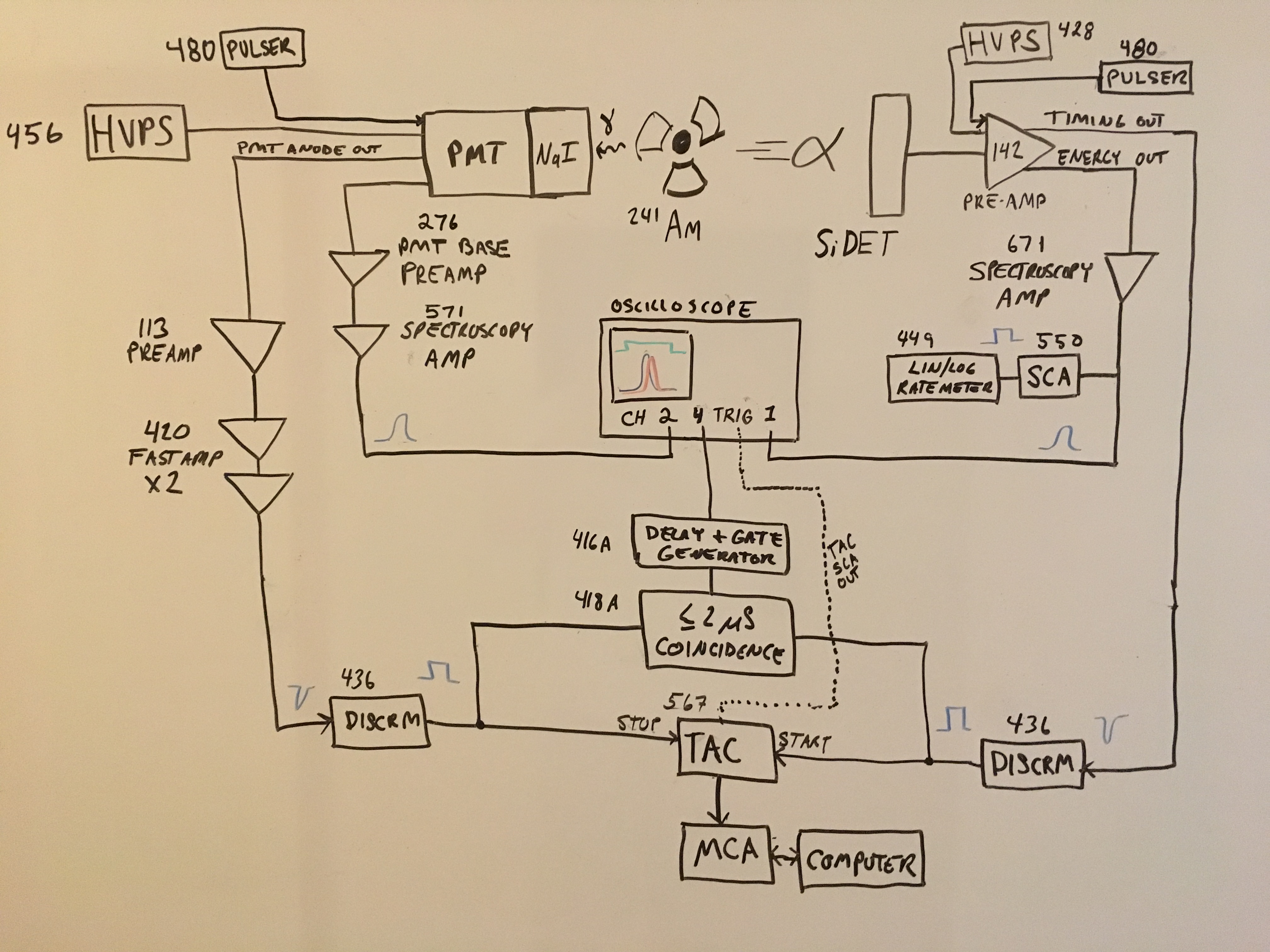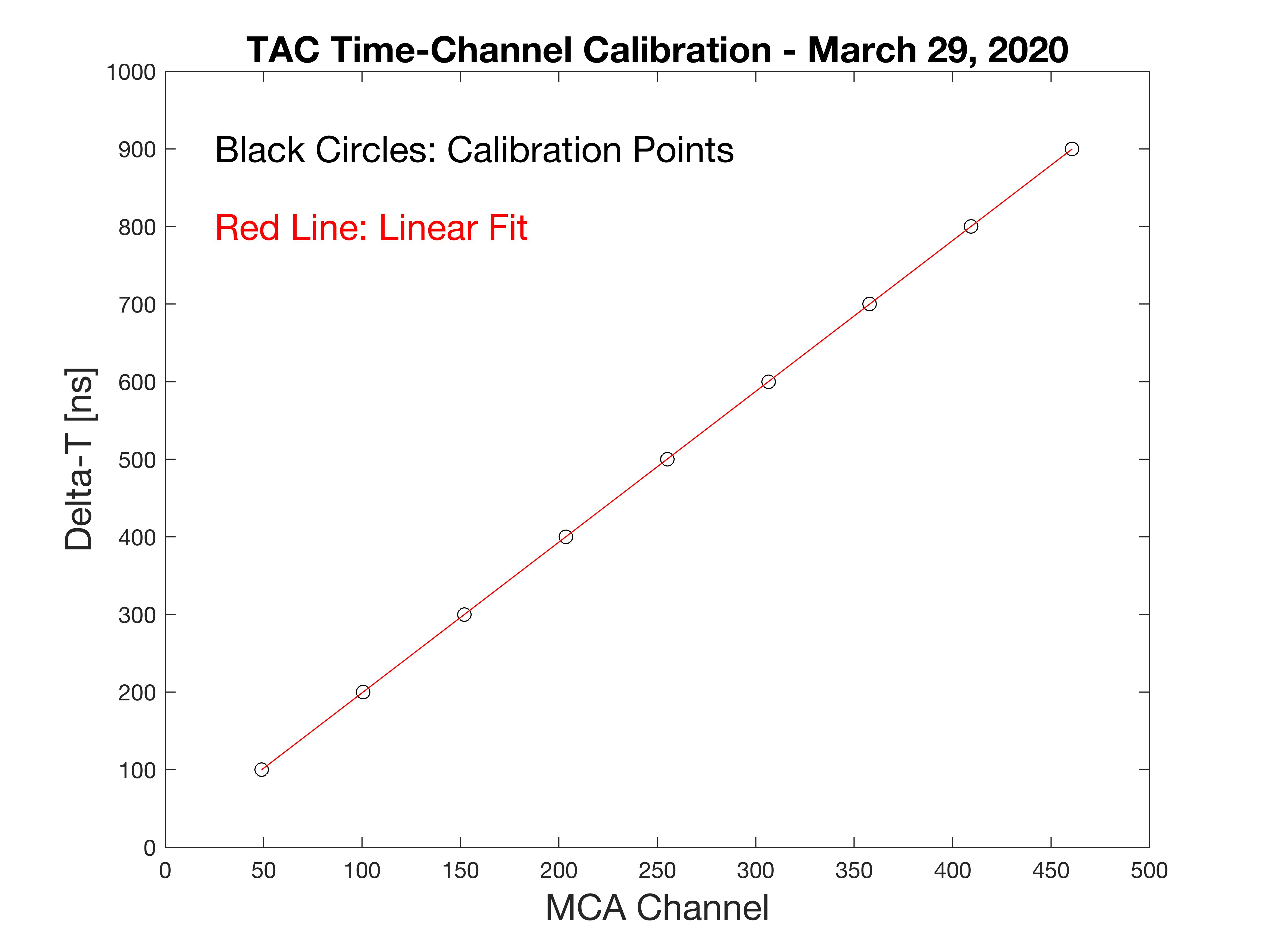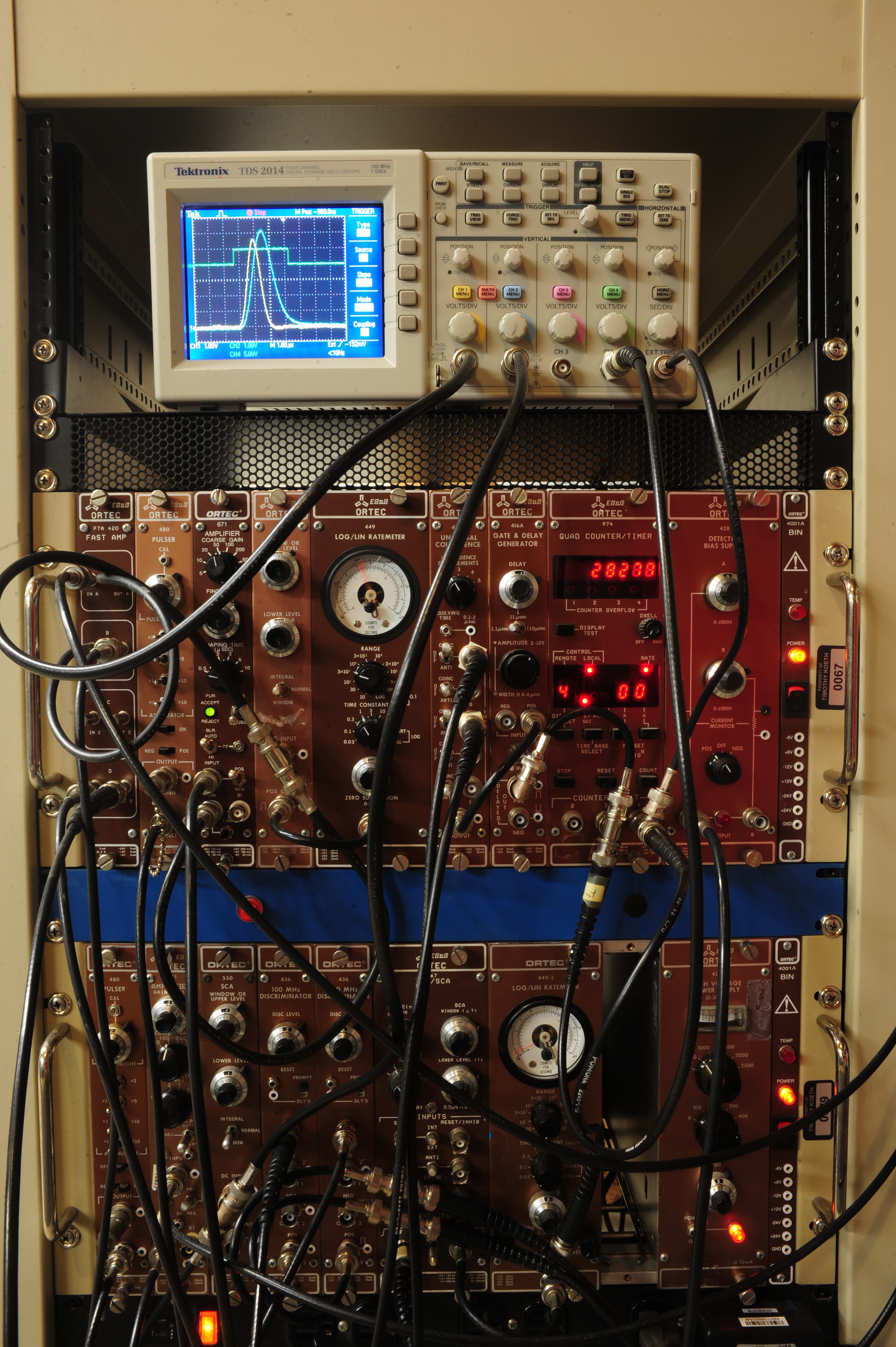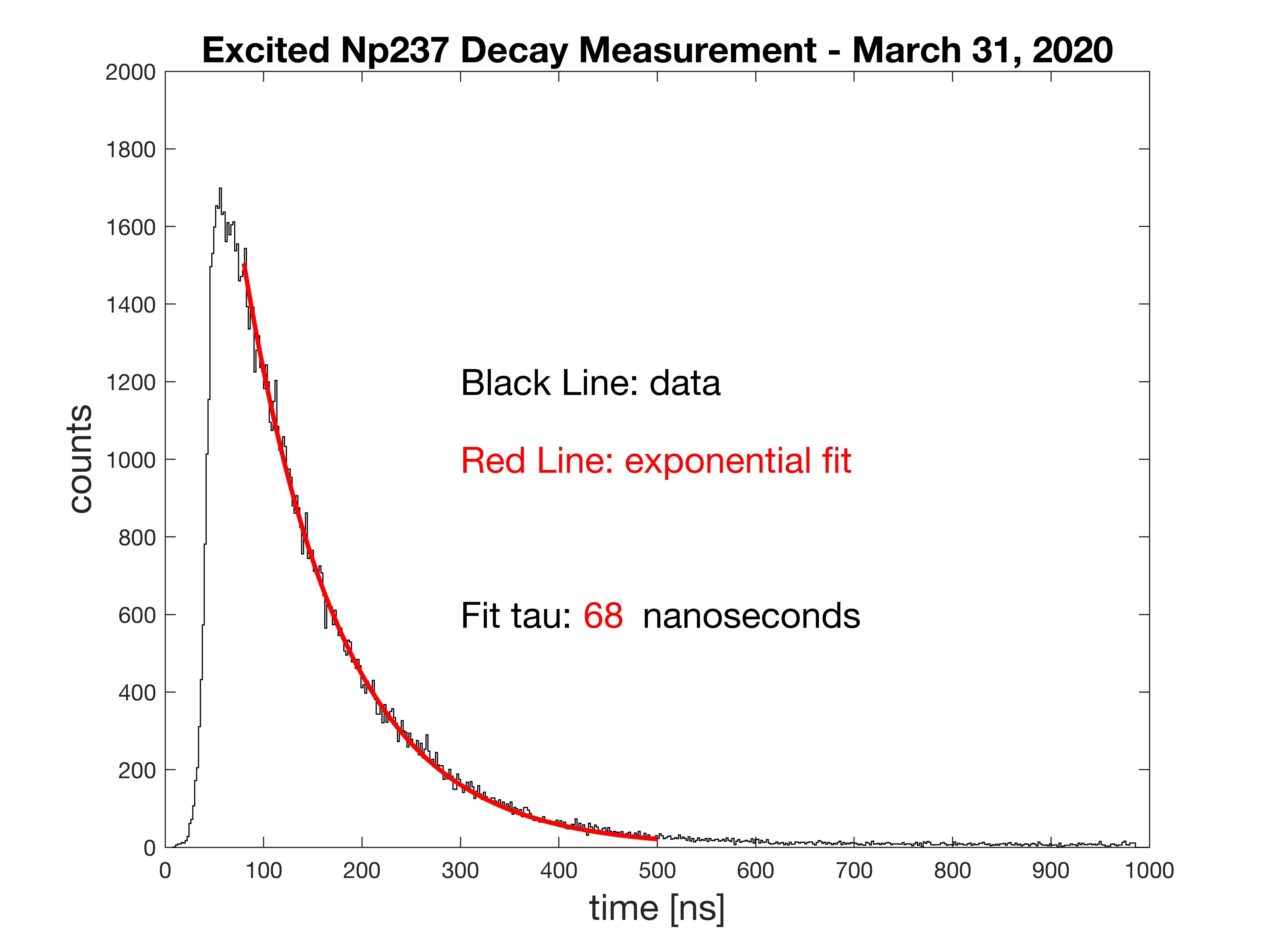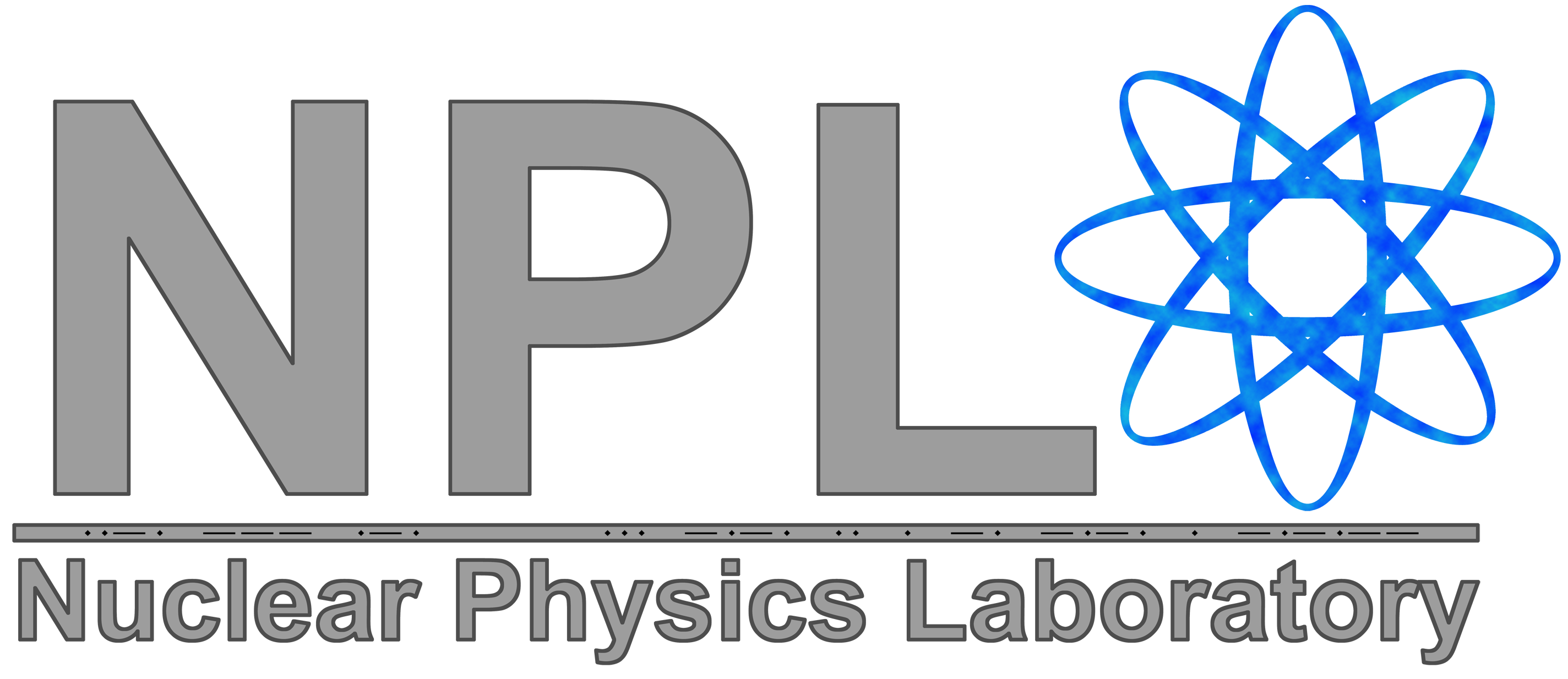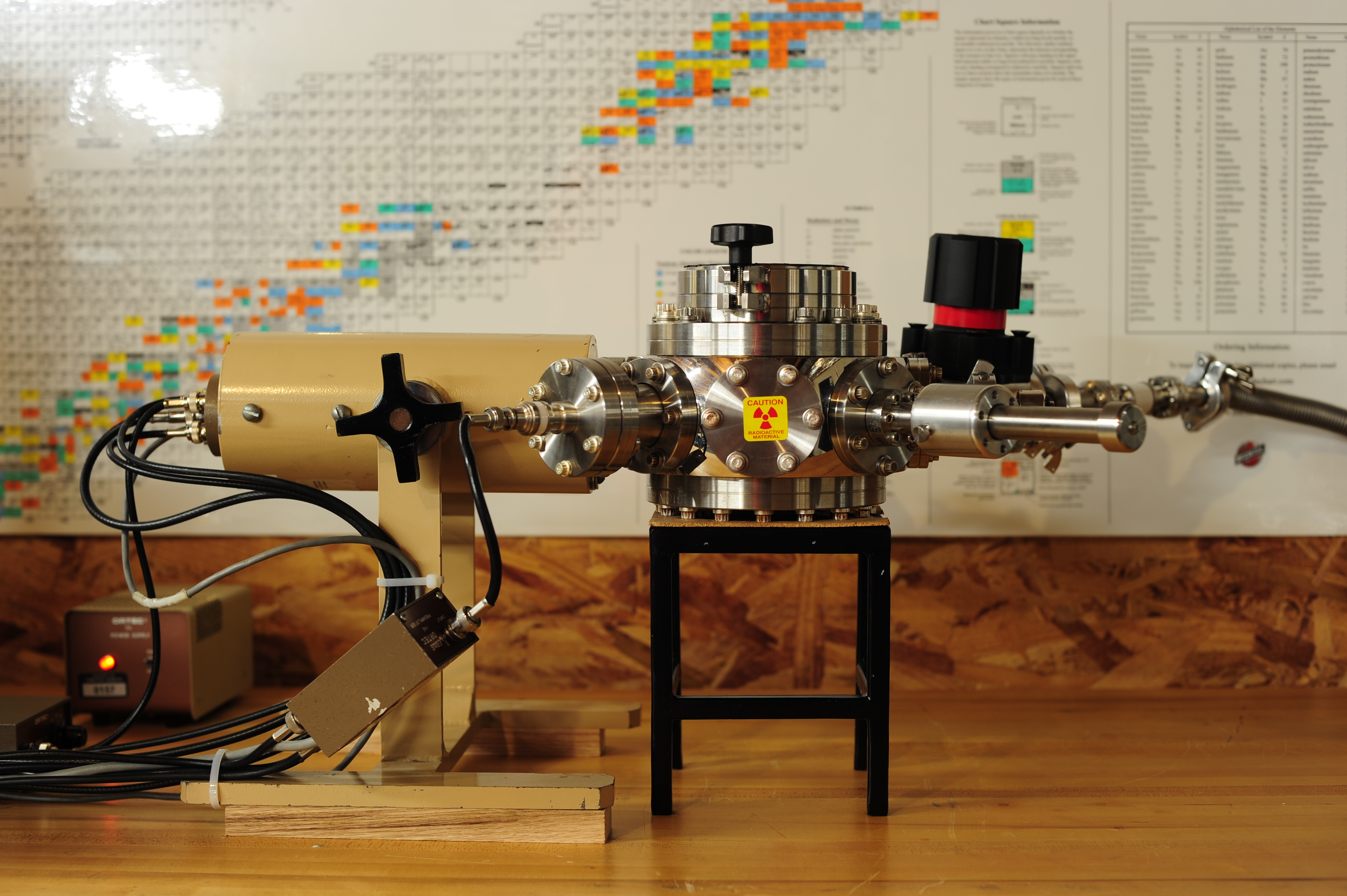Measurement of excited Np237 half-life via the alpha-gamma coincidence method.
Author: Tim
241Am is a favorite source for nuclear scientists, as it is readily available for experimentation with geiger counters, cloud chambers, spectroscopy and the like. 241Am decays 100% via alpha emission to 237Np, approximately 85% of those decays are accompanied with a 59.54keV gamma ray. The origin of that gamma is not the 241Am, but rather the decay (“relaxation”) of an excited state of the 237Np nucleus, denoted here as 237Npm. The 237Npm decays quickly to the ground state of 237Np, but not too quickly. The following experiment measures the half-life to be 68ns which is in agreement with the accepted value of 67ns.
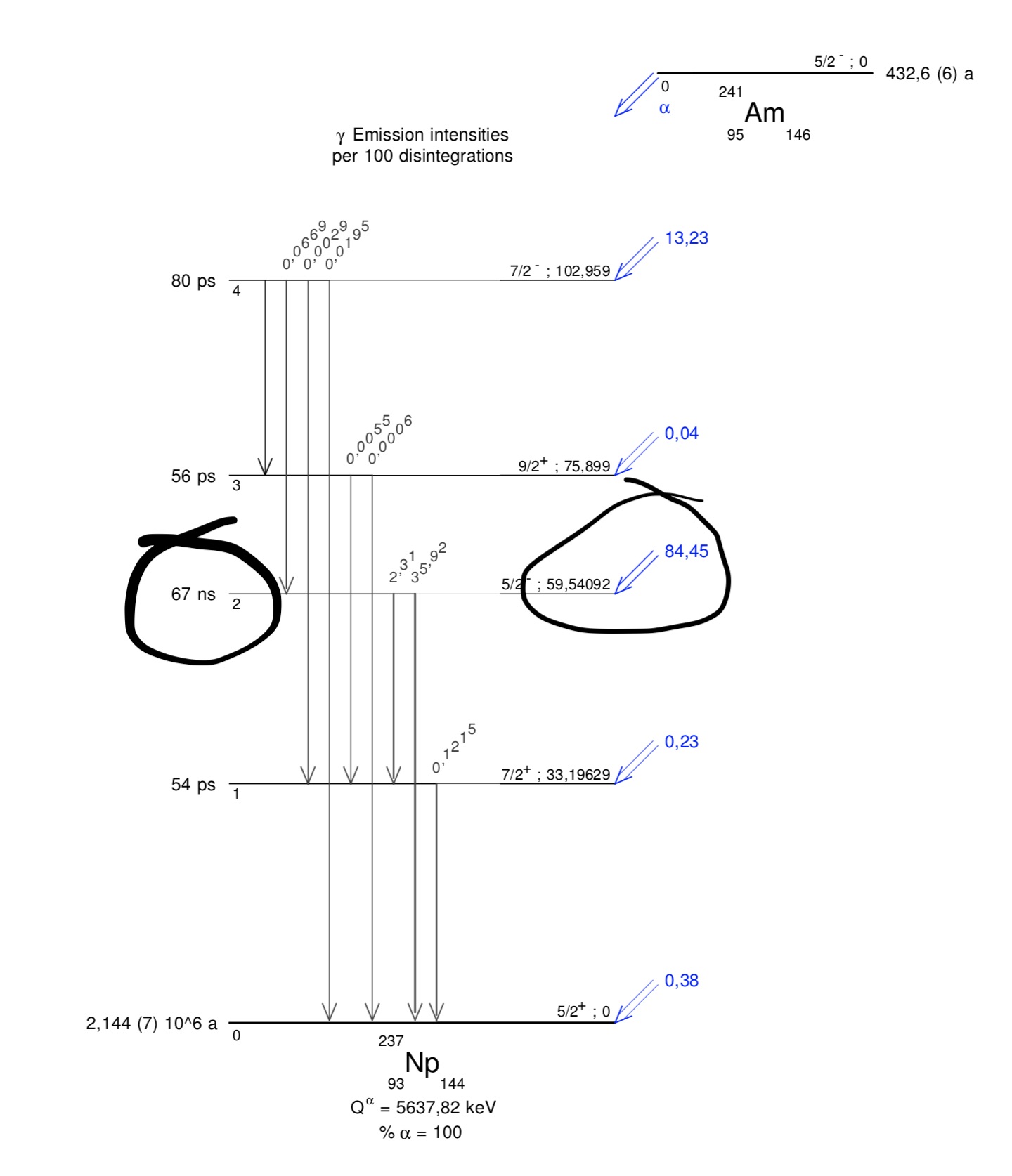
To make this measurement, both alpha and gamma detectors were needed, as well as the NIM electronics to detect the alpha-gamma coincidence. I had it mostly easy, being able to draw everything needed from my surplus NIM module collection, however, as with any surplus NIM module collection, several modules did need repair. Also, I used almost every BNC-BNC cable in my shop!
Because alpha particles have a very short range in air, the alpha particle detection had to occur in a vacuum. I put together this a small vacuum chamber, only pumped on with a direct-drive mechanical pump, to reach 10mTorr. However, the 59.5keV gamma rays that also need to be detected are no match for the solid stainless steel wall of the vacuum chamber. Luckily, I still have my home-made 0.007-inch thick Be vacuum window mounted to a 2.75 inch ConFlat flange. I made this for my “x-rays from scotch tape” experiment about a decade ago. The gamma ray detector, a NaI(Tl) scintillator was placed close to the Be window (the widow has a 1-inch diameter active area). The NaI(Tl) detector is shielded by a portable bench top thyroid scan lead shield.
